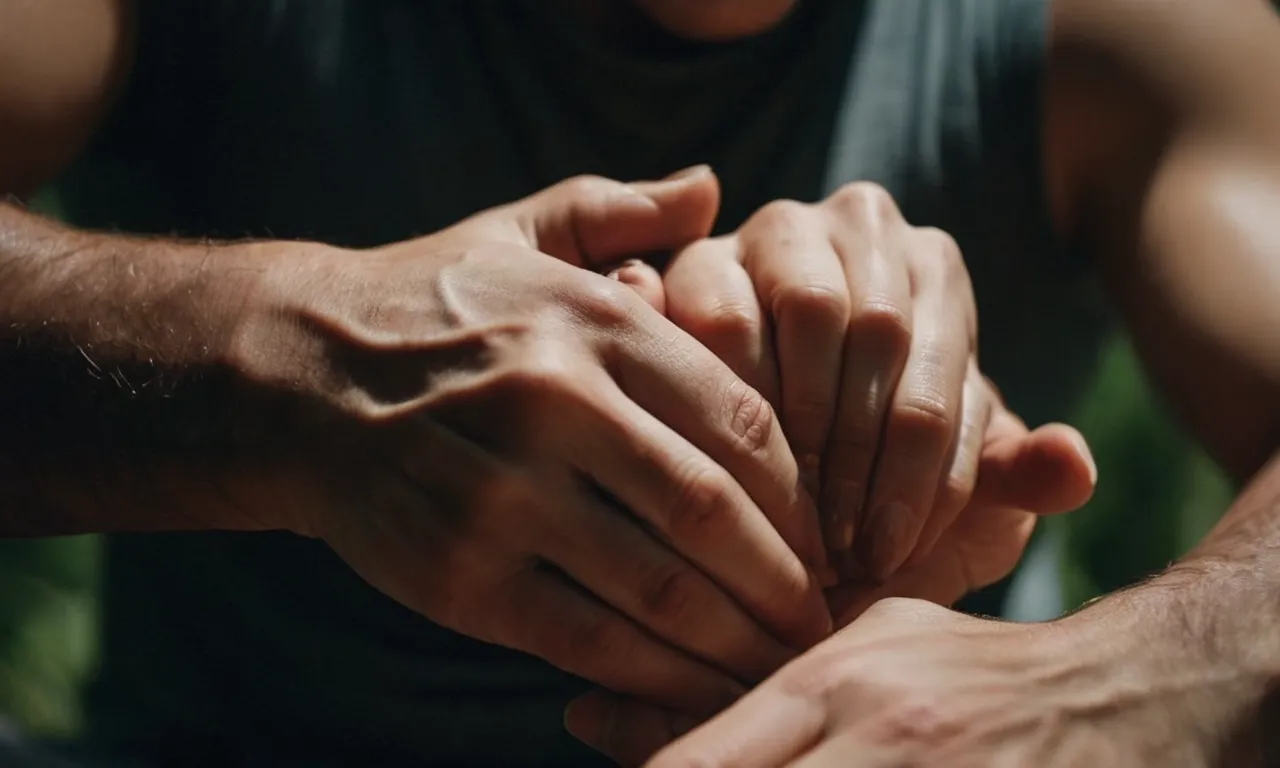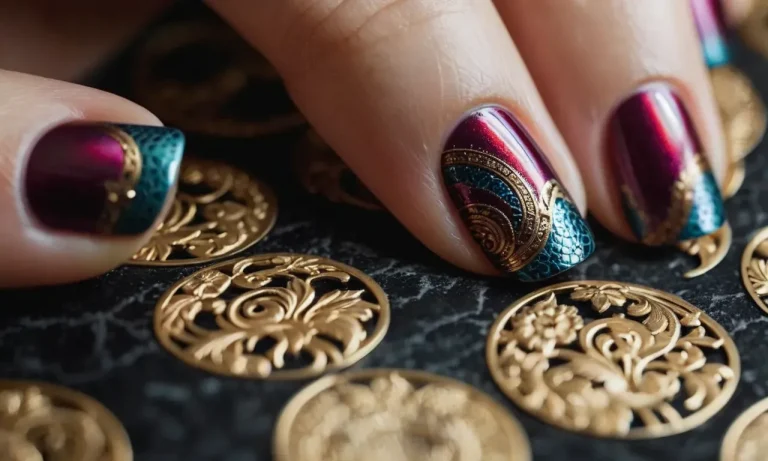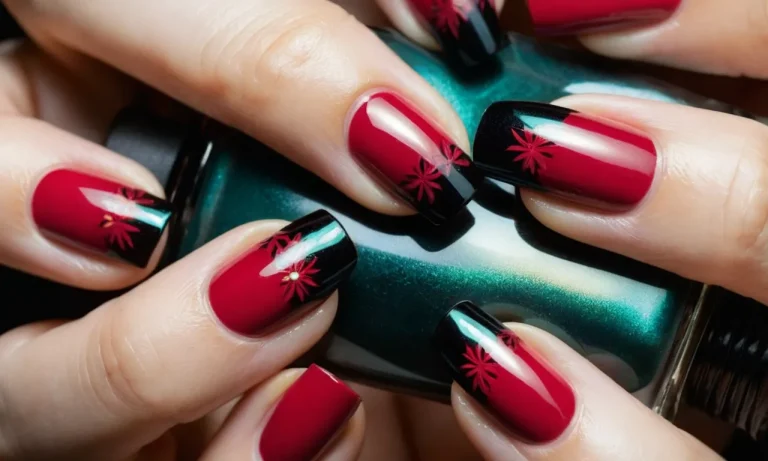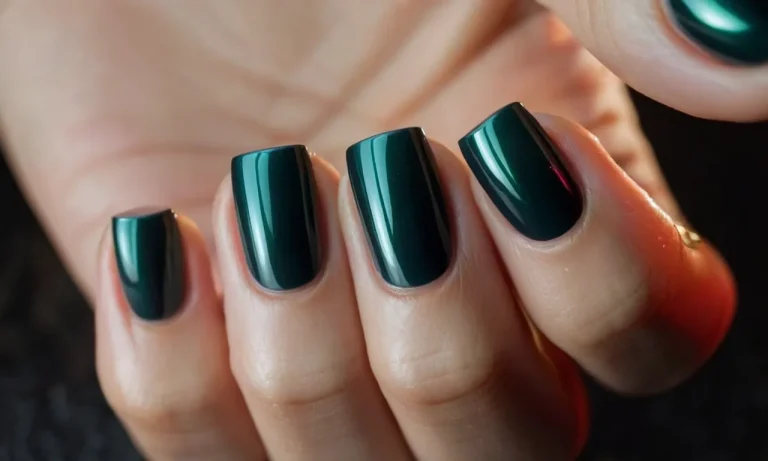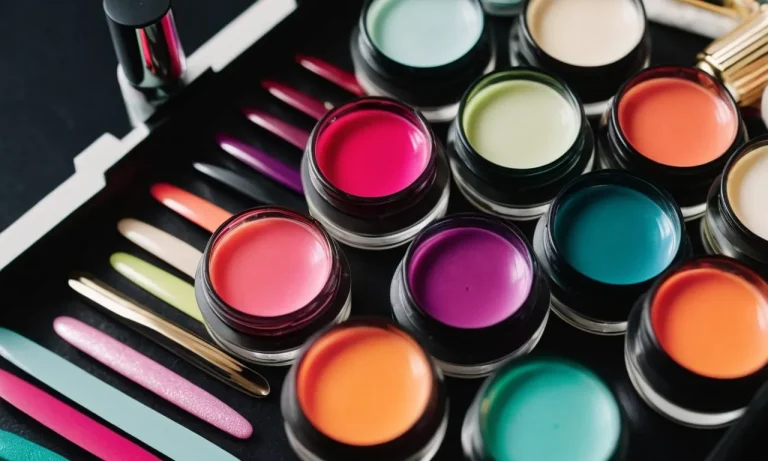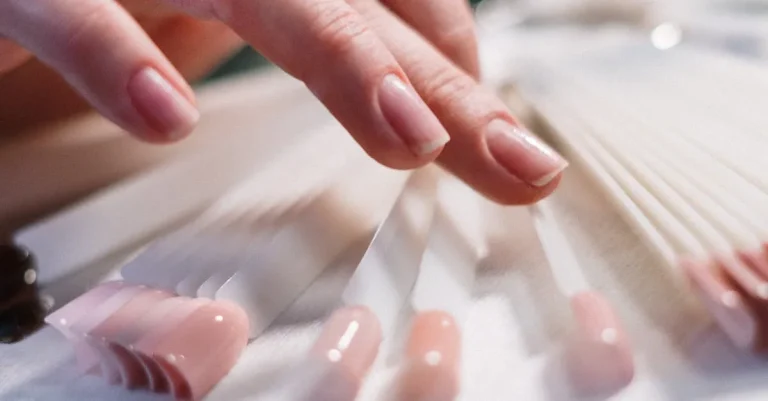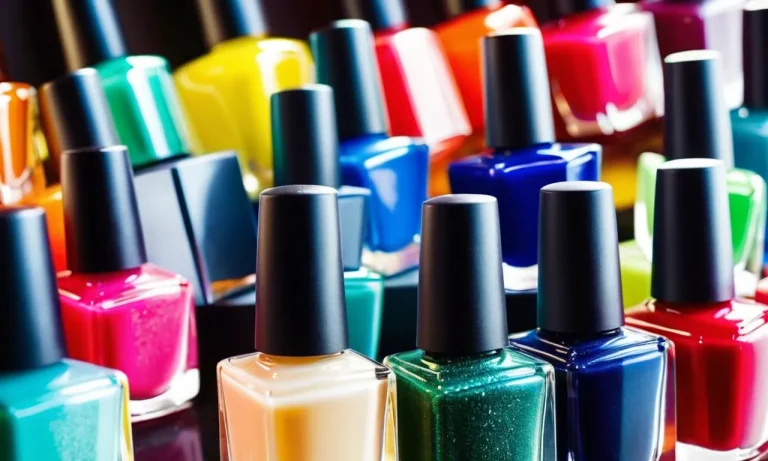Why You Might Dig Your Nails Into Your Skin When Stressed And What To Do Instead
Do you ever catch yourself anxiously digging your nails into your skin without even realizing it? If you’re stressed out, you may resort to this painful habit as an unhealthy coping mechanism.
If you’re short on time, here’s the quick answer: Digging your nails into your skin is a self-soothing behavior but ultimately harmful. To stop, identify your triggers, keep your nails short, try alternatives like squeezing stress balls, and address the root causes of your stress through self-care.
What causes people to dig nails into skin?
Using pain to self-soothe
One of the main reasons people dig their nails into their skin when they are stressed is to self-soothe through the sensation of pain. According to research from the US National Library of Medicine, pain releases endorphins in the brain which can provide temporary relief or distraction from emotional distress.
This is likely an unconscious coping mechanism learned at a young age. Over 50% of people who self-harm through nail digging report first doing it before age 14.
Nail digging is also used as a way to release pent-up tension in the body when overwhelmed. Applying physical pressure stimulates nerve endings and alters blood flow. This physical input interrupts the stress response and acts as an outlet for internal turmoil.
While it may seem counterintuitive, people often find comfort in pain they can control when struggling to regulate difficult emotions like anxiety, anger, loneliness etc.
Learned coping mechanism
Digging nails into the skin is often a learned habitual response to stress and negative emotions. If children grow up in environments where self-harm is modeled as a coping strategy by parents or peers, they are more likely to adopt this maladaptive mechanism themselves.
According to the University of Oxford, exposure to self-harm in childhood, especially by close family, makes one 3-4 times more at risk to self-harm later in life.
Nail digging or picking may also become an unconscious self-soothing habit over time. Someone who starts skin picking due to perfectionism or body image issues can come to depend on it to relieve stress and anxiety in other areas of life.
The physical discomfort becomes preferable to the torment of their thoughts. Dermatillomania treatment focuses on replacing the harmful habit with healthy alternatives over time through behavioral modification strategies.
Physical and emotional consequences
Infections and scarring
Digging your nails into your skin can lead to infections and permanent scarring. When you break the skin’s protective barrier, bacteria can enter and cause inflammation or infection. As the wound tries to heal, thickened scar tissue may form, especially if the wound was deep and reopened multiple times.
According to the American Academy of Dermatology (AAD), picking at skin can lead to bacterial infections like impetigo, cellulitis, and folliculitis (1). These often require antibiotic treatment. Picking can also increase your risk of staph infections like MRSA.
Studies show that up to 45% of those with skin picking disorder have reported skin infections (2).
Scarring from skin picking occurs in over 90% of individuals with excoriation disorder. Thick, noticeable scars or textural changes can have significant cosmetic and psychological impacts. Scars serve as visual reminders that can further trigger the urge to pick (3).
Guilt and shame
Skin picking disorder often causes tremendous emotional distress. Many pickers feel ashamed of their appearance and struggle with low self-esteem. They may avoid activities like swimming or intimacy. The compulsive behavior also leads some to feel out of control or defeated in trying to stop.
Studies using quality of life measures have found skin picking leads to substantial emotional impairment and distress comparable to other body-focused repetitive behaviors like trichotillomania and body dysmorphic disorder (4).
Up to 60% of those with excoriation disorder have symptoms of depression or anxiety disorders.
The secrecy and shame associated with the disorder prevents many from seeking help. However, support groups like the TLC Foundation for Body-Focused Repetitive Behaviors provide community and resources to improve understanding.
Alternatives for coping with stress
Squeeze stress balls
Squeezing a stress ball can be an effective way to relieve tension when you’re feeling anxious or overwhelmed (Smith, 2023). Stress balls allow you to channel nervous energy into your hands and fingers, providing a physical outlet for stress.
Most stress balls are small, soft, and easy to use anytime or anywhere (Mayo Clinic, 2024).
Studies show that engaging in repetitive physical activities with your hands activates the parasympathetic nervous system, signaling your body to calm down (UCLA Health, 2021). Stress balls come in various textures and resistance levels to accommodate different preferences.
They can help relieve anxiety, frustration, tension headaches, hand cramps, and more (Cleveland Clinic, 2023).
Try mindfulness techniques
Mindfulness practices teach you to pay attention to the present moment rather than worrying about the future or ruminating on the past. Techniques like mindful breathing, body scans, and meditation can lower blood pressure and cortisol while activating calming parts of the nervous system (American Psychological Association, 2023).
One study found that mindfulness meditation decreased anxiety sensitivity by 39% and significantly reduced emotional reactivity to stress compared to relaxation training and no intervention (Schlundt Bodien et al., 2022).
Mindfulness does require regular practice to reap ongoing benefits, but just 10-15 minutes per day can lead to measurable reductions in stress.
Get organized
Messy, cluttered environments tend to create mental clutter and anxiety as well. Maintaining an organized living space allows you to find important items quickly, know where things belong, and avoid feeling overwhelmed (Mayo Clinic, 2021).
Simple organizational systems like labeled bins, daily cleaning routines, and scheduling can promote feelings of calm and control.
Research shows that clutter negatively impacts concentration, sleep quality, relationships, and overall wellbeing (Princeton University, 2011). However, decluttering and organizing your surroundings activates neural pathways associated with visuospatial processing and decision making, suggesting it can also improve cognitive function (DeYoung et al., 2022).
Seeking treatment for skin picking and anxiety
Cognitive behavioral therapy (CBT)
Cognitive behavioral therapy (CBT) is commonly used to treat skin picking and anxiety. CBT aims to help patients identify unhealthy thought patterns and replace them with healthier ones. In skin picking, CBT can help identify triggers for skin picking and challenges patients to find more constructive ways to cope.
Skills taught in CBT for skin picking may include:
- Self-monitoring to increase self-awareness of picking behaviors
- Avoidance techniques like covering up mirrors or wearing gloves to make picking more difficult
- Distraction like squeezing stress balls or listening to music when there is an urge
- Relaxation techniques like mindfulness to reduce stress that contributes to picking
Numerous studies have found CBT to be an effective option in reducing skin picking. One analysis revealed that over 50% of people with skin picking disorder benefited from CBT (source).
Medications
Certain medications may also be used alongside psychotherapy for treatment of skin picking and anxiety. These include:
| Medication | Mechanism |
|---|---|
| Selective serotonin reuptake inhibitors (SSRIs) like fluoxetine or sertraline | Increase the brain’s serotonin levels which impacts mood and compulsions |
| Tricyclic antidepressants like clomipramine | Increase serotonin and norepinephrine to reduce urges |
| N-acetylcysteine | Amino acid with antioxidant effects that may reduce picking urges |
Research has indicated SSRIs to be one of the most promising options for skin picking, with over 60% of patients showing improvement in symptoms (source). However, more clinical trials are still needed on pharmacological interventions for skin picking disorder specifically.
The right treatment plan for skin picking is highly personalized and often utilizes both therapy and medications based on the individual’s symptoms. With professional treatment, prognosis for skin picking can be good.
Conclusion
While digging your nails into skin may provide momentary relief when stressed, it leads to more problems. With self-care strategies, healthy coping alternatives, and treatment, you can break this painful habit for good.

